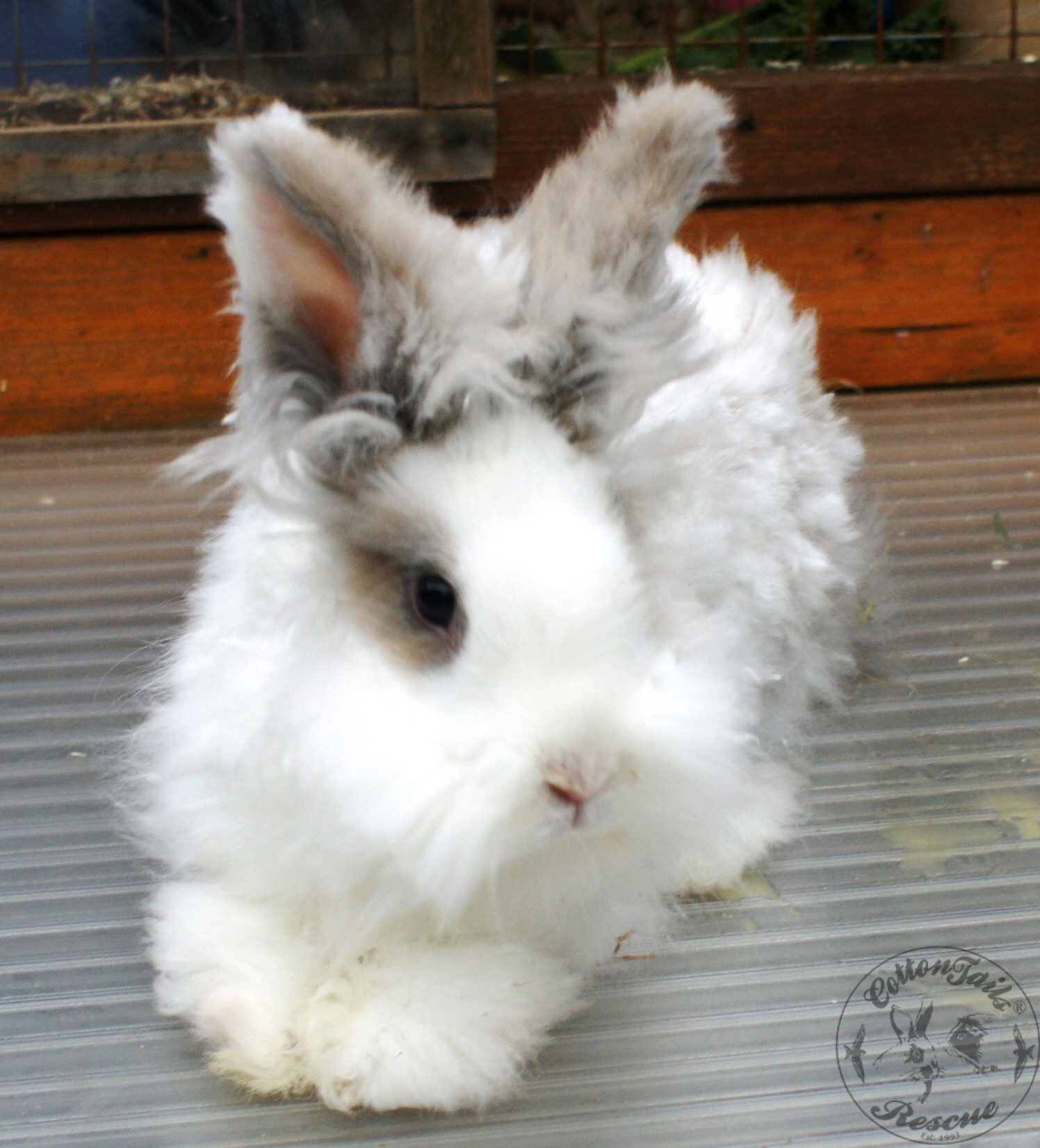Having run CottonTails® for over 30 years, I have been aware that the personal preferences of potential rabbit owners can significantly affect their decisions when adopting a rabbit or pair of rabbits. As a result, the impact of this phenomenon meant I could often correctly predict what rabbits would be adopted quickly, compared to those that would be here for many months waiting not only for the right home but for the right owner.
With this in mind, I felt it would be helpful to determine what factors could influence a potential owner’s choice. From that knowledge, I worked out what could be done to counteract such prejudices to give each animal an equal chance of finding a home. Factors such as any special needs of the rabbits were not built into the survey. This would be a study in itself and potentially complicate the findings by introducing an emotional factor into the equation, so the results are based on straightforward cosmetic choices of the potential owner. To compare the difference between the responses by website participants and the pet shop customers, scroll down towards the end, as these results are presented separately.
Method
A survey was prepared using 11 basic questions with multiple choice answers, the last three questions being about the respondents themselves. The survey was posted on the CottonTails® website, with links to the study on the blog page. The survey was also in paper form and handed out to customers of local pet shops in Frome and Swindon. The questions were as follows:
- Do you prefer lop-eared rabbits or upright-eared rabbits
- What is your favourite colour of rabbit?
- What is your least favourite colour of rabbit?
- What is the most crucial factor when choosing a rabbit?
- What size of rabbit do you prefer?
- Do you like or dislike pink-eyed rabbits?
- Where would you prefer to purchase your rabbit from?
- What is the most critical factor in this decision?
- What gender are you?
- What age are you?
- What is your location?
Results
A total of 377 individuals completed the survey. The results were calculated by converting the figures to a percentage of the total for each question. Still, in questions where the option of “no preference” was offered (questions 1, 2, 3, 5, 6), the conclusions were based on the results from people who did state a preference.
Question 1
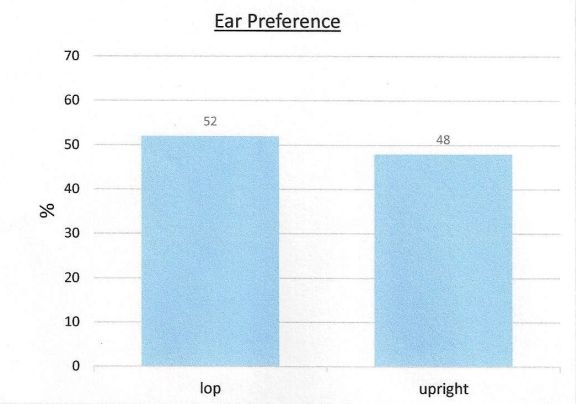 Of those respondents that stated a preference, it was clear that ear carriage preference is split almost in half, with 52% preferring lops and 48% preferring upright-eared rabbits. People stating no preference accounted for 56% of the total.
Of those respondents that stated a preference, it was clear that ear carriage preference is split almost in half, with 52% preferring lops and 48% preferring upright-eared rabbits. People stating no preference accounted for 56% of the total.
Question 2
 Of the respondents who stated a preference, there was a wide range of opinions, but two-tone (such as Dutch rabbits) and multi-coloured rabbits were the most popular. People stating no preference accounted for 50% of the total.
Of the respondents who stated a preference, there was a wide range of opinions, but two-tone (such as Dutch rabbits) and multi-coloured rabbits were the most popular. People stating no preference accounted for 50% of the total.
Question 3
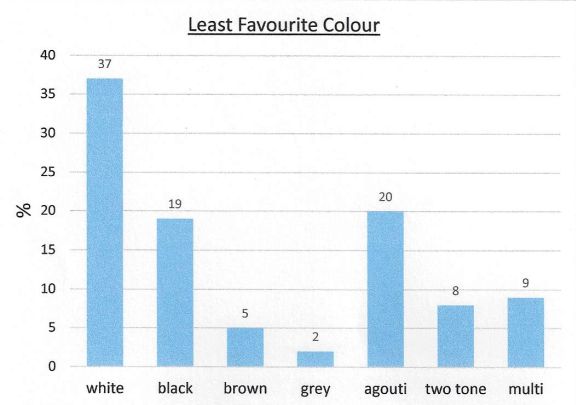 Of the respondents that stated a preference, white was the colour most consistently disliked by owners, followed by agouti (wild colour) and black, respectively. People stating no preference accounted for 52% of the total.
Of the respondents that stated a preference, white was the colour most consistently disliked by owners, followed by agouti (wild colour) and black, respectively. People stating no preference accounted for 52% of the total.
Question 4
 It was clear that personality was felt to be the most critical factor in choosing a rabbit, followed by good health and compatibility (suitability for bonding with another rabbit).
It was clear that personality was felt to be the most critical factor in choosing a rabbit, followed by good health and compatibility (suitability for bonding with another rabbit).
Question 5
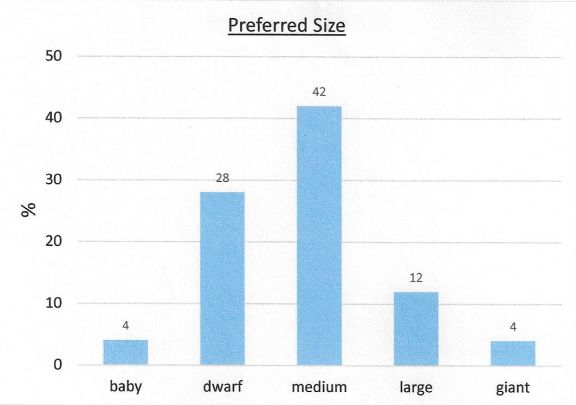 Of the respondents who stated a preference, medium-sized rabbits proved to be the most popular, with dwarf breeds the next most popular. People stating no preference accounted for 45% of the total.
Of the respondents who stated a preference, medium-sized rabbits proved to be the most popular, with dwarf breeds the next most popular. People stating no preference accounted for 45% of the total.
Question 6
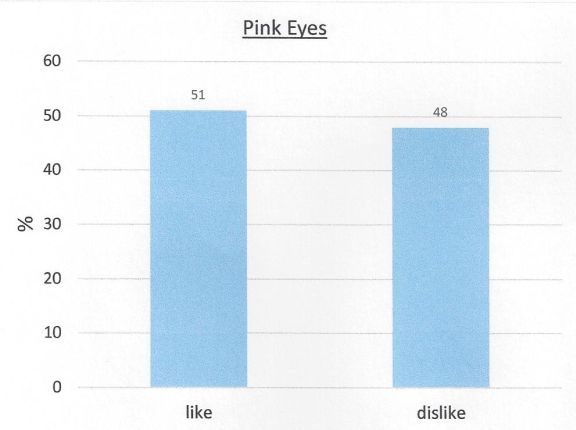 Of the respondents who stated a preference, there was only a 4% difference between those who like pink-eyed rabbits and those who dislike them, slightly more admitting to liking them than not. People stating no preference accounted for 52% of the total.
Of the respondents who stated a preference, there was only a 4% difference between those who like pink-eyed rabbits and those who dislike them, slightly more admitting to liking them than not. People stating no preference accounted for 52% of the total.
Question 7
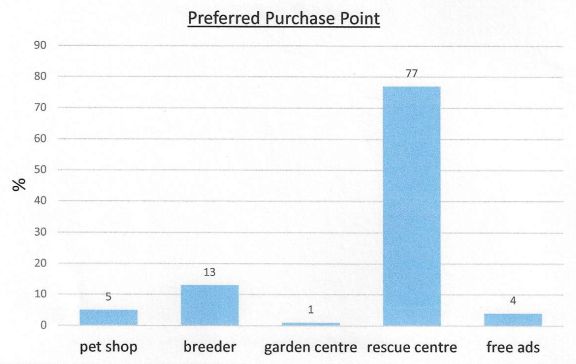 Most respondents preferred to purchase a rabbit from a rescue centre.
Most respondents preferred to purchase a rabbit from a rescue centre.
Question 8
 It is clear from the results that most people chose their purchase point based on first reputation and, secondly, service provided.
It is clear from the results that most people chose their purchase point based on first reputation and, secondly, service provided.
Question 9
 Most respondents were female, with only 10% being male.
Most respondents were female, with only 10% being male.
Question 10
 Most respondents (47%) were in the 31-50 age bracket, with the next highest category being 16-30 (32%).
Most respondents (47%) were in the 31-50 age bracket, with the next highest category being 16-30 (32%).
Question 11
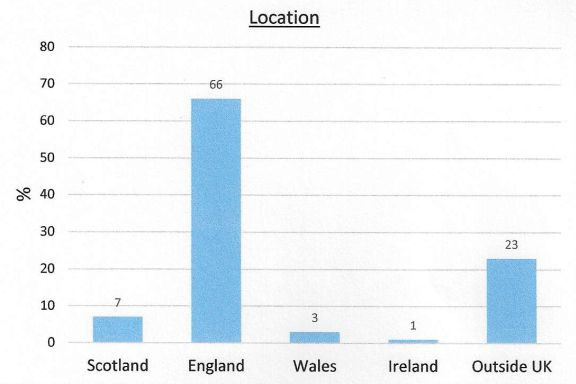 Most respondents were in England (66%), the next highest category being from outside the UK (23%).
Most respondents were in England (66%), the next highest category being from outside the UK (23%).
Conclusions
It is widely accepted that the results from surveys and questionnaires cannot always be taken as true preferences, as a small percentage of respondents choose not to tell the truth or are unwilling to tell the truth. With this owner preference survey, some people likely skewed their answers toward what they felt they should be saying rather than what they believed, so this has to be considered when analysing the results. The other factor to be considered is that most respondents completed the survey from the CottonTails® website and, as such, are already a minority audience in respect they are motivated enough not only to read a rabbit welfare website but also to take the time to complete the survey. However, the small sample of people who completed the survey on paper whilst visiting a pet shop did not differ vastly from the general results, apart from all who stated a preference in question 6, clearly stating that they all disliked pink-eyed rabbits! Despite this note of caution, the results are useful as they confirm, in most cases, my already suspected owner preferences when people come to choose a new rabbit, and this will help us now in the future to try and address these issues and give certain categories of rabbit a higher profile to give them a better chance of finding a new home quicker than is currently the case. So, let’s look at the results in detail. Whilst it is encouraging that an average of 54% of respondents stated they had no preference in respect of ear carriage, colour, size or pink eyes, the practicality of the situation may be different from that, as there have been many occasions where a potential owner arrives to choose a new rabbit and states that they do not mind what the rabbit looks like, and promptly proceeds to choose the prettiest rabbit in the rescue! Of ear carriage results, there is little difference in preference between lops and upright-eared rabbits. This is excellent news for rescue centres that often have a selection of both types, with a few somewhere in between (we call them aeroplane ears). 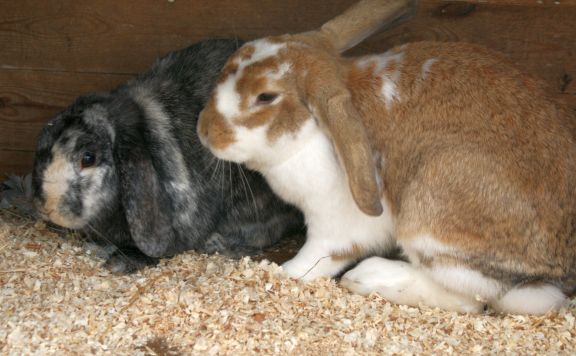
For colour preference, there are no surprises here as most people preferred the pretty two-tone or multi-coloured rabbits to the plainer colours, with white rabbits coming out on top as the most disliked colour, followed by agouti and black. Linking this to the results of the pink-eyed rabbit question, it is clear that albino rabbits are a major problem as far as re-homing is concerned, and this is an important factor to consider when bonding rescue rabbits in a rescue centre for ultimate adoption as a pair. I frequently match an albino rabbit with a pretty opposite sexed rabbit in the hope that this factor finds the pair a home, people often being willing to overlook the albino to have the pretty one.
For the most important factor to consider in choosing a rabbit, personality came out on top, followed by good health, and then compatibility (vital if intending to bond the rabbit with another one). The worrying aspect as far as the personality preference is concerned is that unless the rabbit is at least 4-5 months old, it will not show its true personality as this develops as it matures, for good or bad. This is why owners are often shocked at the apparent change in their rabbit when it comes of age, not realising that this is the true personality and that the gentle, cute little creature they had before was simply a baby with all the sweet characteristics that this brings.
Also slightly worrying is that health was not the most important consideration in most people’s opinions! As far as size is concerned, the majority of people stating a preference preferred medium-sized rabbits, followed by dwarf breeds. However, one person’s view of a medium rabbit does not necessarily agree with someone else’s! I am frequently told by potential adoptees that a particular pair of rabbits are bigger than expected, despite showing accurate photos of them on the website with items like food dishes in view to give a scale, as well as an attempt to indicate size by a chart consisting of the number of toilet rolls needed end to end for the length of rabbit concerned (3 end to end for a medium breed for example). I also find it very difficult to believe that so few people said that a baby rabbit was their preferred size, but that could be due to the sort of owner who answered the questions (rabbit savvy) compared to the possible opinion of an average pet shop customer (no disrespect intended) with limited knowledge of the intricacies of rabbit keeping.
The preference regarding pink-eyed rabbits was interesting, as I had expected more people to dislike them than was apparent here (48% of people stating a preference did not like pink-eyed rabbits). However, almost half of potential owners have openly said they don’t like such rabbits, which is a significant number and a potential problem for rescue centres that get more than their fair share of such rabbits. Purchase point preference was surprising. When I did a similar questionnaire about ten years ago, most people preferred to buy their rabbits from a breeder, closely followed by pet shops, with very few indeed opting for rescue centres. Ten years on, the opposite appears to be the case, as most respondents nominated rescue centres as their preferred option.
Once again, had all the respondents been customers of pet shops, we may have seen a different result. Still, it is also possible that with all the TV Rescue programmes that have been on in the last few years, the message is perhaps getting across. In contrast, ten years ago, few people would have known the possibility of choosing a pet from that source. Rescue centres take note of the following! The reason stated for most people choosing to go to a rescue centre was down to good reputation and quality of service, so you will not get away with just the emotional factor of trying to find a poor bunny a nice home, you must also provide knowledgeable and trustworthy service, with high standards, if you want to be successful in your rehoming.
For the personal details of the respondents, it is not surprising that the large majority were female, as this corresponds with who usually does the pet choosing/looking after in most households! There are always exceptions, so for any disgruntled male rabbit keeper I do apologise … Most respondents came within the 31-50 or 16-30 age bracket, and the majority live in England. Strangely, there were more respondents from overseas than the whole of Wales, Scotland or Ireland put together! Does this mean that England leads the way in owners keen to find out about their rabbits compared to the rest of the UK? I would not attempt to answer that one.
I suspect many of the overseas respondents are from the USA, as the interest in rabbits is very strong over there, with many rabbit rescue centres and several very keen rabbit welfare organisations. Despite the work involved, I am pleased I carried out the survey, as it has given me food for thought and the stimulus needed to work on how to make certain categories of rabbits more appealing and, therefore, speed their journey to their new forever home.
Breed Preference Survey – Comparison of website versus pet shop customers
When I decided to carry out the Breed Preference Survey, I realised that the location of the questionnaire could influence the results – people completing it from the CottonTails® website would be already motivated enough to visit the website anyway. They, therefore, would more likely have an informed approach towards rabbit welfare. In contrast, customers visiting pet shops possibly responded without such knowledge and answered truthfully and without preconceptions about the “politically correct” response. It is clear from the results that there is a difference in response between the two groups of participants, and whilst the actual numbers are small (almost 400 questionnaires completed via the website compared to nearly 100 completed by pet shop customers), it has still been an interesting exercise to compare the two sources. Let’s examine each question with an accompanying graph to illustrate the comparisons. My thanks to Nicki Hall and Wendy Barry for facilitating the pet shop survey data collection.
Ear Preference
Of those stating a preference, 65% of pet shop customers said they preferred lops to upright-eared rabbits, 15% higher than website followers. 
Colour Preference
Of those stating a preference, the pet shop customers preferred two-tone, then grey rabbits best, with website participants choosing two-tone and multi-coloured rabbits. The vast difference in opinion on multi-coloured rabbits between the two groups is puzzling, with only one customer stating this as their favourite, whereas 21% of website participants chose this as their favourite colour. It is possible that website followers are familiar with the term and understand its meaning, whereas the pet shop customers were perhaps unsure of what it meant. The other explanation is that they do not like multi-coloured rabbits! Although the positive take on the results is that people have vastly differing opinions on what they think is their favourite colour, this has to be balanced with what they consider to be their least favourite colour, as in the question below. 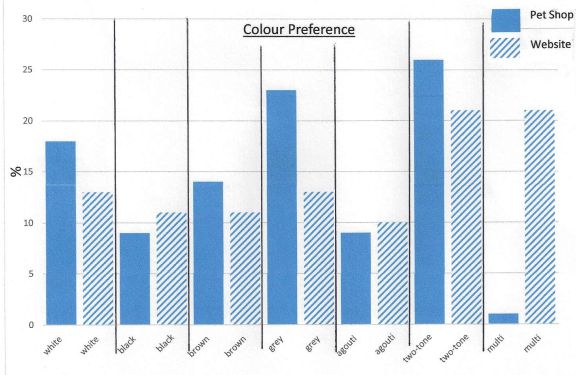
Least Favourite Colour
Of those stating a preference, the minor favourite colours were white, black, and agouti, although the website participants were more tolerant of black rabbits than the pet shop customers. 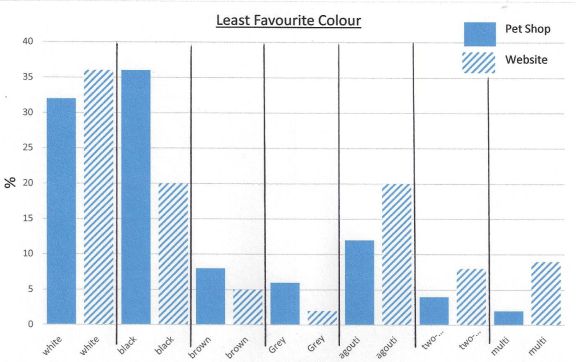
Most Important Characteristics when choosing a rabbit
Both pet shop customers and website followers stated that personality and health were the two most important characteristics when choosing a rabbit. However, the fact that 23% of the website participants chose compatibility as an important factor compared with only 1% of pet shop customers would indicate that the website participants were more aware of the importance of bonding rabbits into compatible pairs. 
Preferred Size
Preferred size was the same in both categories, with medium and dwarf sizes being the most popular. A slight increase of 6% in people who preferred babies in the pet shop customers compared with website site participants. 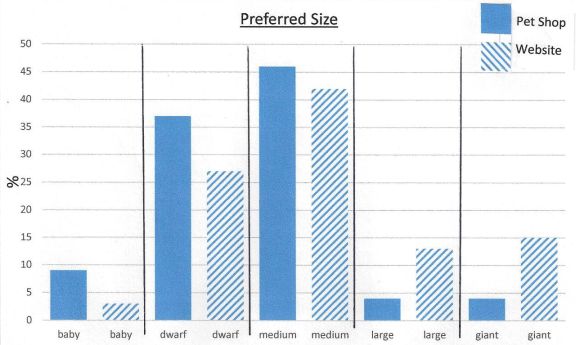
Pink Eyes
Regarding pink-eyed rabbits, there was an apparent dislike of pink-eyed rabbits (77%) among pet shop customers, compared to 45% of website followers. This may indicate either a greater tolerance of potentially unimportant cosmetic factors in website participants or pet shop customers feeling less compelled to tick the “politically correct box”. This higher intolerance of pink eyes is undoubtedly reflected here at CottonTails®, with many potential owners openly stating that they hate such rabbits and would not adopt one. 
Purchase Point
Although rescue centres still proved to be the most popular choice for where to purchase rabbits, the response of 38% was much lower from pet shop customers compared to 78% of website followers. Likewise, the figures for pet shop preference (33%) or breeder (24%) were considerably higher than for website followers (4% and 14% respectively). Once again, website participants are likely to be more aware of the unwanted rabbit situation and consider it when choosing a rabbit, possibly more so than the pet shop customers. 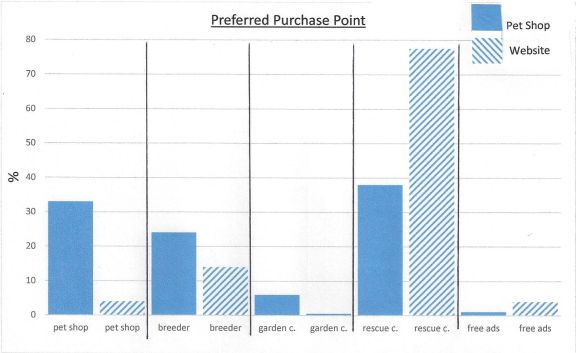
Purchase Point Reason
Reputation scored highest for Pet shop customers and website participants, but convenience was chosen next with 30% response compared to 6% scored for convenience in website participants. Good customer service and attitude proved less crucial for pet shop customers (15%) than website followers (36%). 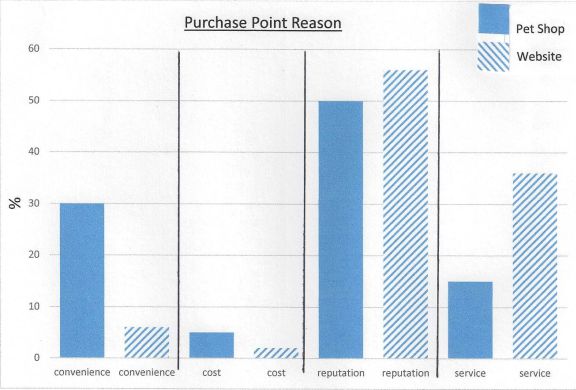
The No Preference Options
Of the five questions that gave a “no preference” option, pet shop customers were likelier to state a preference. 60% chose, compared to 46% of website participants. The only question where the difference was negligible was regarding the dislike of pink eyes, and the number of participants stating an actual opinion was almost the same in both cases. 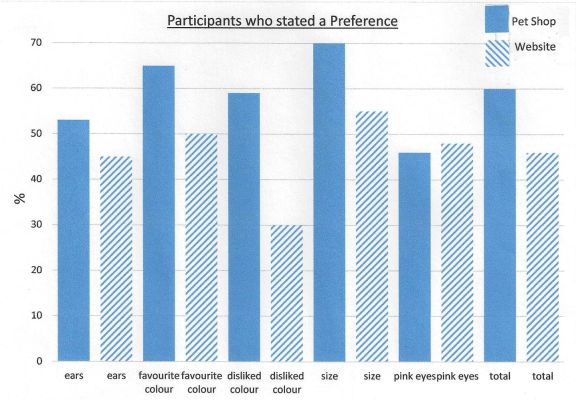
Final Conclusions
A significant factor I have learned from this survey is the importance of the location of the questionnaire itself. If placed on an animal welfare website or magazine, the responses are more likely to be weighted in favour of animal welfare, with more tolerance of minor “less desirable” cosmetic differences, plus an awareness of what answers may be more “politically correct” despite not necessarily being entirely truthful.
When the pet shop customers filled in the questionnaires, these factors could have been stronger, perhaps being less informed about the unwanted rabbit situation and presenting a more accurate overall picture of how most people generally view rabbits. Whilst I am aware that the information presented on the website is “preaching to the converted”, the survey comparison has reinforced this view. It is clear that the only way to get the correct information across to would-be rabbit owners is to tackle the actual source – the purchase point – whether that be pet shop, breeder or garden centre. It is at this stage that most owners obtain their knowledge, and hence, this sets the path for the rabbit’s future, for good or bad.
How do we achieve this? All we can do collectively is keep chipping away at pet shops, pet accessory manufacturers and other pet outlets in the hope that, eventually, there will be more people with the correct knowledge than those without. The right information is out there by the bucket load, but many pet owners choose to ignore it, and for those owners, there seems little can be done apart from trying to persuade them not to take on the pet in the first place!

